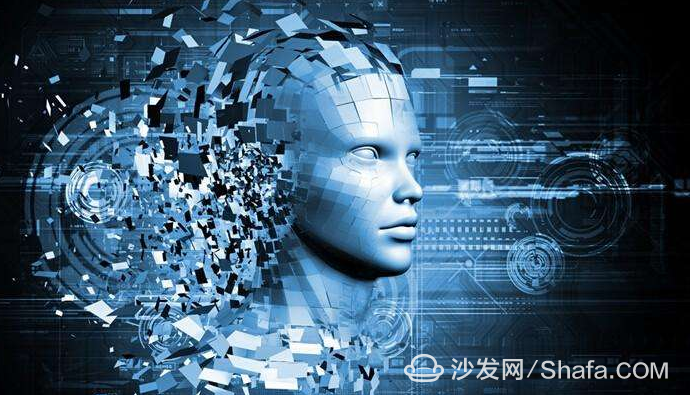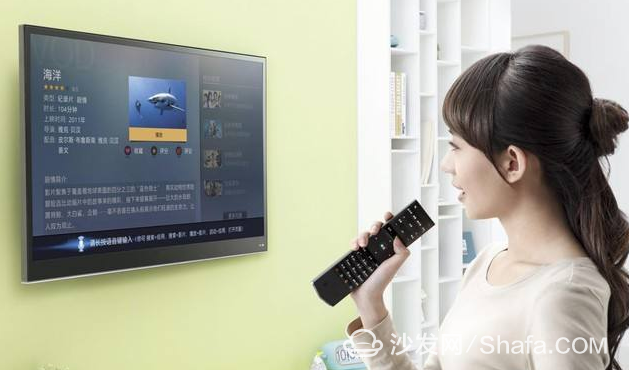Since the advent of the Alpha Dog, artificial intelligence has become a hot word. Since last year, it has penetrated into the field of smart TV. Especially in the first half of this year, artificial intelligence television ushered in a big explosion, more and more TVs have been marked. The label of "artificial intelligence" seems to be a TV that has left the artificial intelligence overnight and is not on the table. However, from the reality, artificial intelligence is just another concept of being over-consumed.

At the 2017 Artificial Intelligence TV Industry Summit held in Beijing some time ago, the "2017 Artificial Intelligence TV White Paper" gave a complete definition of artificial intelligence, "accepting user instructions through sensors, relying on basic applications and basic data platforms to identify and understand user goals, Feedback and processing, while relying on sound technical logic and big data operations, combined with deep learning algorithms, analysis of user habits, user preferences and behavioral logic to achieve more accurate interaction and personalized content recommendations. From this definition, it can be seen that the algorithms, hardware, and technology required by artificial intelligence televisions need time to accumulate. There are certainly many problems with so many artificial intelligence televisions in such a short time.
One: simply stay at the voice level

Throughout most artificial intelligence TVs, voice functionality is a must, but AI TV reception instructions do not rely solely on speech recognition, but also in-depth interactions such as somatosensory recognition, face recognition, and emotion recognition. Some artificial intelligence TVs only have the ability of voice recognition. For smart TVs, this is not a fresh feature.
II: The voice function is relatively unhelpful. Although each member is actively enriching the voice function, the most obvious improvement of the TV control experience after the voice is added is only in search. In the past, inputting the remote control on the TV was very tedious. The content is fine. Most of the other functions are dispensable. They look beautiful and practically do not work.
Three: The speech recognition accuracy is low

As far as some artificial intelligence TVs on the market are currently concerned, the ability of voice recognition is in fact not able to open up a significant gap, and the accuracy rate can reach at least 90%. If you are talking, basically all TVs can understand and can be controlled in real-life scenarios. There are many, such as dialects, environmental noise, the speed of speech, etc., will have a certain impact on accuracy.
Four: Semantic comprehension ability needs to be improved. Tell a TV the name of a specific movie or TV drama. After the TV is recognized, it will automatically start the search or even start playing. However, if you ask “The TV drama of Lin Chang’s performance,†last year, "Oscar Best Picture" and so on, the test is the ability to understand the semantics of television. It requires accurate analysis and in-depth understanding to give a satisfactory answer. The technical requirements are high and there is still much room for exploration.
V. The limitations of voice control are greatly limited by the unity of the content platform. Smart TVs always have limitations in content. They have to install third-party applications to expand content. However, voice functions do not work for them. Content-based search eventually All that is pointed to is the content of the TV's built-in video platform. After entering a third-party application, all operations still need to be performed via remote control buttons.
Sixth: The private ordering of "Thousand People and One Thousand Faces" is very good.

Compared to mobile phones with personal attributes, television is shared by the whole family. As an interactive artificial intelligence TV, combined with the definition at the beginning of the article, it needs to “analyze user habits and master user preferences and behavioral logic in order to achieve more accurate "Interactive and personalized content recommendation", however, different family members have different viewing habits, and TV content recommendation based on the captured viewing habits is certainly not accurate enough, perhaps relying on voiceprint recognition technology to achieve the "thousands of people" of the family. .
Seven: There is a short content

There is no one TV that can include video, music and other content on all platforms. For example, searching for a movie just happens to be a single video broadcast by TV, and the intelligence level of TV is too high to be able to do anything. The artificial intelligence experience eventually felt will also be greatly reduced. Therefore, for the television industry, as artificial intelligence continues to advance, it is necessary to enrich content resources. However, the biggest benefit of smart TV is that it can install third-party software such as sofa butlers to expand more content resources.
Eight: It is difficult to become a smart home entrance

With the in-depth development of smart homes, TVs with large screens naturally have the advantage of smart home entrances. Televisions can be connected with other smart devices in the home, such as televisions, air conditioners, refrigerators, and water heaters. However, this requires a unified control protocol. Supportively, from the current development situation, each major appliance company is fighting each other. The equipment that can be accessed is very limited, and the advantage in the smart home entrance competition is not obvious.

Smart TV/box information can focus on smart TV information network sofa butler (http://), China's influential TV box and smart TV website, providing information, communication, TV boxes, smart TVs, smart TV software, etc. Answering questions.

At the 2017 Artificial Intelligence TV Industry Summit held in Beijing some time ago, the "2017 Artificial Intelligence TV White Paper" gave a complete definition of artificial intelligence, "accepting user instructions through sensors, relying on basic applications and basic data platforms to identify and understand user goals, Feedback and processing, while relying on sound technical logic and big data operations, combined with deep learning algorithms, analysis of user habits, user preferences and behavioral logic to achieve more accurate interaction and personalized content recommendations. From this definition, it can be seen that the algorithms, hardware, and technology required by artificial intelligence televisions need time to accumulate. There are certainly many problems with so many artificial intelligence televisions in such a short time.
One: simply stay at the voice level

Throughout most artificial intelligence TVs, voice functionality is a must, but AI TV reception instructions do not rely solely on speech recognition, but also in-depth interactions such as somatosensory recognition, face recognition, and emotion recognition. Some artificial intelligence TVs only have the ability of voice recognition. For smart TVs, this is not a fresh feature.
II: The voice function is relatively unhelpful. Although each member is actively enriching the voice function, the most obvious improvement of the TV control experience after the voice is added is only in search. In the past, inputting the remote control on the TV was very tedious. The content is fine. Most of the other functions are dispensable. They look beautiful and practically do not work.
Three: The speech recognition accuracy is low

As far as some artificial intelligence TVs on the market are currently concerned, the ability of voice recognition is in fact not able to open up a significant gap, and the accuracy rate can reach at least 90%. If you are talking, basically all TVs can understand and can be controlled in real-life scenarios. There are many, such as dialects, environmental noise, the speed of speech, etc., will have a certain impact on accuracy.
Four: Semantic comprehension ability needs to be improved. Tell a TV the name of a specific movie or TV drama. After the TV is recognized, it will automatically start the search or even start playing. However, if you ask “The TV drama of Lin Chang’s performance,†last year, "Oscar Best Picture" and so on, the test is the ability to understand the semantics of television. It requires accurate analysis and in-depth understanding to give a satisfactory answer. The technical requirements are high and there is still much room for exploration.
V. The limitations of voice control are greatly limited by the unity of the content platform. Smart TVs always have limitations in content. They have to install third-party applications to expand content. However, voice functions do not work for them. Content-based search eventually All that is pointed to is the content of the TV's built-in video platform. After entering a third-party application, all operations still need to be performed via remote control buttons.
Sixth: The private ordering of "Thousand People and One Thousand Faces" is very good.

Compared to mobile phones with personal attributes, television is shared by the whole family. As an interactive artificial intelligence TV, combined with the definition at the beginning of the article, it needs to “analyze user habits and master user preferences and behavioral logic in order to achieve more accurate "Interactive and personalized content recommendation", however, different family members have different viewing habits, and TV content recommendation based on the captured viewing habits is certainly not accurate enough, perhaps relying on voiceprint recognition technology to achieve the "thousands of people" of the family. .
Seven: There is a short content

There is no one TV that can include video, music and other content on all platforms. For example, searching for a movie just happens to be a single video broadcast by TV, and the intelligence level of TV is too high to be able to do anything. The artificial intelligence experience eventually felt will also be greatly reduced. Therefore, for the television industry, as artificial intelligence continues to advance, it is necessary to enrich content resources. However, the biggest benefit of smart TV is that it can install third-party software such as sofa butlers to expand more content resources.
Eight: It is difficult to become a smart home entrance

With the in-depth development of smart homes, TVs with large screens naturally have the advantage of smart home entrances. Televisions can be connected with other smart devices in the home, such as televisions, air conditioners, refrigerators, and water heaters. However, this requires a unified control protocol. Supportively, from the current development situation, each major appliance company is fighting each other. The equipment that can be accessed is very limited, and the advantage in the smart home entrance competition is not obvious.

Smart TV/box information can focus on smart TV information network sofa butler (http://), China's influential TV box and smart TV website, providing information, communication, TV boxes, smart TVs, smart TV software, etc. Answering questions.
P3.5X6 Automotive Connector
P3.5X6 Automotive
ShenZhen Antenk Electronics Co,Ltd , https://www.atkconnectors.com